by Billy Sweet | Sep 27, 2016 | Chimney Masonry Maintenance
There are a lot of things that can go wrong during the life of your chimney including age, natural disasters, and more. The most detrimental thing that can happen to your masonry chimney is water penetration. Your chimney is constructed of a variety of masonry and metal materials, all of which are adversely affected by water. Therefore it is vital to keep them maintained, which most importantly includes waterproofing.
Professional Services, Professional Standards
When you trust a professional with your chimney, you get what you pay for. There are waterproofing products and services that are specially formulated for chimney use. Keep in mind they should only be applied by a professional who is experienced and educated!
Common waterproofing services that Billy Sweet offers include:
- Sealant
These are professional-grade chemical products that should only be applied by a CSIA Certified Chimney Sweep® (CCS). This breathable sealant seals your chimney from water penetration from the outside. Also, the sealant still allows the vapors and smoke to be released through the porous masonry from the inside. This process is important and should not be missed while waterproofing your chimney.
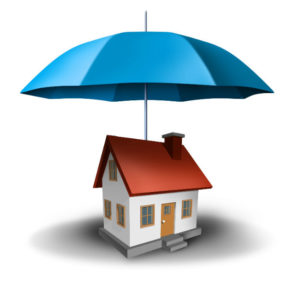 Flashing
Flashing
Flashing is made up of thin sheets of metal, placed strategically and specifically for your chimney to keep water out. It is placed around the intersection of the chimney and roof. This can be very easily damaged over time. Only a professional chimney sweep knows the best material and best placement of the metal sheets for your chimney and slant of your roof. Choosing the wrong material or placing them improperly can cause shifting and rusting. This allows your chimney to leak.- Chimney Caps
Although they may seem optional, the chimney cap is essential for chimney efficiency and the life of the chimney. It also keeps your family and property safe. The chimney cap keeps rain water and snow from falling into your chimney flue, while still allowing vapors out. The chimney cap can often be damaged or installed improperly, allowing water to fall into the chimney. This can result in rusting parts and damaging masonry through a process of freezing and thawing. Chimney caps also keep wild life out of your chimney, which can cause blockage and fire.
- Chimney Crown
The chimney crown works with the chimney cap to keep water from entering the chimney flue. The chimney crown is a concrete piece that reaches from the flue across the top of the chimney to the edge. It is constructed specifically for your chimney, with a slant to direct water away from the flue and onto the roof. If your chimney sweep reports only minor damage, cracks and pits in your crown, he can recommend and apply a crown coat sealant that will repair and prolong your crown’s life. If more extensive damage exists, your chimney sweep can remove the damaged crown and construct a new, durable crown that will last for years.
When Should You Waterproof?
To avoid damage, high cost repairs, and loss of life and property you should make chimney maintenance a priority. Scheduling your regular chimney sweeps and yearly inspections is the best way to catch a problem before it becomes a problem. By the time a homeowner notices a leak, stain, spalling, or other signs of a leaky chimney there is probably extensive unseen damage. A Billy Sweet Chimney Sweep is experienced and trained to notice risk factors and issues that pose a risk to your chimney system. We put safety first always, and we’re certified to get the job done right.
Call Billy Sweet today or contact us online to schedule an appointment!
by Billy Sweet | Sep 18, 2016 | Chimney Masonry Maintenance
Your chimney system is made of many working parts, that together do a very important job. Without your chimney the byproducts from your fire would be released into your home, causing health risk and increased chance of  fire. An important part of the chimney that keeps it working properly is the chimney crown, and it should not be overlooked.
fire. An important part of the chimney that keeps it working properly is the chimney crown, and it should not be overlooked.
What is a Chimney Crown
The chimney crown is a masonry slab that covers the top of the chimney from the flue liner to the edge of the chimney. The crown is designed to keep water from entering the flue, and guides the water instead to the roof. The chimney cap prevents water from entering the flue from the sky, and the crown prevents water from entering the flue from the edge of the chimney.
The chimney crown should be professionally installed, and is made specifically for each chimney. If the chimney crown is not the correct size or installed incorrectly then water will not only enter the flue, but can also pool around the chimney and penetrate the flashing.
Water and Your Chimney
Water damage is the single worst enemy of your masonry chimney. It can cause parts to rust, masonry to weaken and crumble, walls and ceilings to leak, and more. Avoid this costly damage by getting the job done right the first time.
Hire a Professional
A general contractor may be unfamiliar with chimneys, chimney crowns, and other vital chimney parts. To ensure that you’re getting the proper taper, overhang, and materials call Billy Sweet Chimney Sweep. A proper chimney crown should be constructed of a Portland cement-based mixture and cast or formed so it provides an overhang projecting behind all sides of the chimney by a minimum of two inches. Also, the flue liner should project above the crown a minimum of two inches.
A CSIA Certified Chimney Sweep® (CCS) can not only construct a proper chimney crown, but is also experienced in assessing damaged crowns as well as repairing them.
Signs Your Chimney Crown Needs Repairs
Cracks, crumbled masonry, or chipping and flaking—known as spalling—as well as chimney leaks and leaks around the crown itself is cause for repair. An experienced and professional chimney sweep can assess damage and offer a fair rate to repair or replace the chimney crown. If damages are not extensive, our technician can apply a simple crown coat sealant, which will seal cracks, creating a water-proof barrier.
Your trusted chimney sweep will quickly assess damage and offer a repair plan that you can feel comfortable with. Our top priority at Billy Sweet Chimney Sweep is the safety of our customers. We do not cut corners with training, experience, or work. We are licensed, ensured, and guarantee the best.
Call a Billy Sweet Chimney Sweep today, and make sure your chimney crown is ready for fall and winter!
by Billy Sweet | May 25, 2016 | Chimney Draft Problems, Chimney Flashing, Chimney Inspection, Chimney Maintenance
Spring isn’t just an ideal time for spring cleaning. It’s also a great time to complete your chimney checklist to ensure the safety and efficiency of your chimney system. As the saying goes April showers bring May flowers, and if your spring showers have caused you some chimney worries, you might have a leak, and a leak is a big deal.
It is important to call a CSIA Certified Chimney Sweep® (CCS) as soon as you suspect a chimney leak. By the time a homeowner notices signs of a chimney leak, it’s likely that it’s caused substantial unseen damage.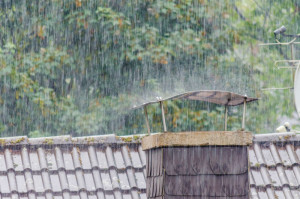
Some Signs of a Chimney Leak
1. Water stained walls and ceiling
2. Clogged clean-out area
3. Rusted parts
4. Dripping in fireplace
5. Fowl smelling chimney and fireplace
6. Stained Chimney
By the time these problems are noticed by the homeowner, the damage has been done. According to the Chimney Safety Institute of America (CSIA) water can cause much more extensive damage that can be detected by a professional during a cleaning or inspection.
Why Hire a Professional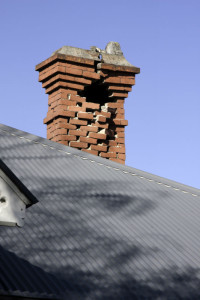
A general contractor or roofer is not the right professional to make this diagnosis. Calling a certified chimney sweep insures homeowners that the job will be thorough, and damage will be detected and repaired in a timely and professional manner. When water penetrates your masonry chimney it causes damage such as: deteriorated firebox, decayed mortar, cracked or damaged flue lining, collapsed hearth support, tilting or collapsed chimney structure, and chimney settlement.
Not only will a professional chimney sweep inspect and diagnose your chimney problems, but should offer the homeowner a detailed report and repair plan.
At Billy Sweet Chimney Sweep, serving Boston, North Shore, and Portland area, we don’t only repair the damage, but trace the leak back to the source, and offer waterproofing services.
Waterproofing Your Chimney
Another reason to hire a professional chimney sweep is because prevention is cheaper than making repairs! At Billy Sweet Chimney Sweeps we apply a waterproof product on masonry chimneys that is created specially for chimneys to keep water out, but allows vapors to escape. We even offer FREE Waterproofing on exterior masonry repair.
Other Chimney Leak Prevention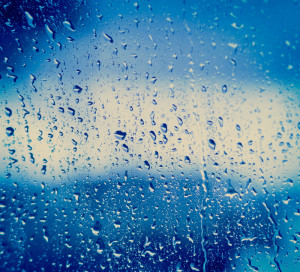
While discussing your leaky chimney with a professional, don’t forget to mention these other preventative measures:
- chimney cap repair or replacement
- damper repair or replacement
- chimney crown inspection and repair
While planning your spring cleaning, do not neglect your chimney. Your annual chimney inspection is a great time to discuss waterproofing and leak prevention with a certified chimney sweep. A Billy Sweet Chimney Sweep is waiting for your call today.
by Billy Sweet | Apr 25, 2014 | Uncategorized
Chimney Swifts
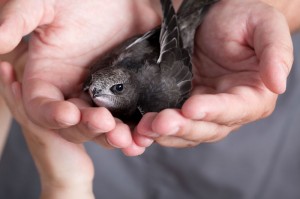
These birds are protected by federal law, don’t attempt to remove them yourself.
You may have heard chattering, fluttering, and other noises coming from your chimney and wondered, “Are there birds nesting up there?” Quite possibly, chimney swifts have taken over your chimney as their new home. According to the Driftwood Wildlife Association, chimney swifts are fascinating, adaptable birds who learned to nest and roost in chimneys when their native habitat of large hollow trees in forests of North America were cut down. However, if a family of chimney swifts does nest in your chimney, you should be aware that, according to the Humane Society of the United States, these birds are protected by the Migratory Bird Treaty Act, and removing or destroying nests with eggs or young can result in fines and penalties. Fortunately, the CSIA-certified technicians at Billy Sweet Chimney Sweeps are familiar with the regulations and habits concerning chimney swifts and can work with you on scheduling your annual chimney sweep around the life cycle of the chimney swift as well as fit your chimney with a customized chimney crown to keep the chimney swifts out, if you would rather not share your chimney with these birds.
Protecting These Birds
The Driftwood Wildlife Association formed a special project to promote the conservation of chimney swifts, and they provide valuable information to homeowners through a website, chimneyswifts.org, featuring articles like “Being a Good Chimney Swift Landlord.” With invaluable tips for those who do not mind sharing their chimney with these birds since they do only nest during the summer season, they recommend having your chimney swept in mid-March to have all of the creosote build-up removed, as this makes it impossible for the chimney swifts to build their nests to the walls without danger of falling. The birds make their return from South America after their wintering is over, and as they are migratory, they tend to return to the same nesting area. Like the Humane Society, this article stresses the importance of chimney swifts being protected by federal law and warns against chimney sweep businesses who illegally remove chimney swift nests and eggs. Be wary of companies who advertise “bird removal,” as this is a blatant violation of state and federal laws that protect migratory birds. Instead, choose a company like Billy Sweet Chimney Sweeps, who is active in promoting chimney swift conservation, to perform your annual chimney sweep.
Proper Removal of Their Nests
While the noises of the baby birds chirping for food can be shrill and annoying, they will not last forever. Just keep in mind that this is only temporary, and after that short period, you will rarely know the chimney swifts are there. However, be sure your damper is completely closed to keep them from flying into your house. The nests of these birds are small, cup-shaped constructions of small twigs glued to chimney walls by the birds’ saliva. Too small to be a fire hazard, you will still need to contact Billy Sweet Chimney Sweeps to remove the nest after they leave in the fall. This is needed to remove bird parasites, and since chimney swifts tend to return to the same nest, you do not want them to try to use the old nest as it will be unstable and probably collapse.
If you would like more information about chimney swifts, contact our knowledgeable staff at Billy Sweet Chimney Sweeps. We are happy to answer any questions you may have as well as schedule a chimney sweep for you or a consultation about chimney crown repair.
 Flashing
Flashing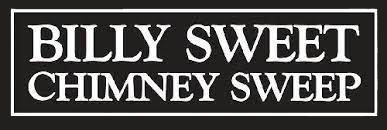
 fire. An important part of the chimney that keeps it working properly is the chimney crown, and it should not be overlooked.
fire. An important part of the chimney that keeps it working properly is the chimney crown, and it should not be overlooked.


